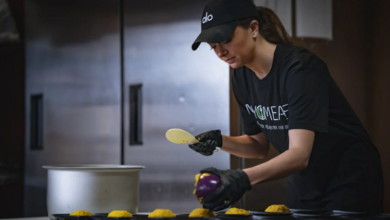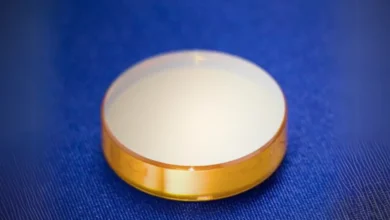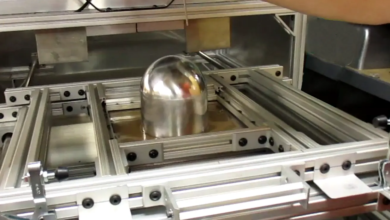CNC Turning: Precision and Efficiency in Machining

CNC turning is a crucial machining process that plays a significant role in modern manufacturing. It is widely used to produce precise, high-quality cylindrical components with excellent repeatability. Industries such as aerospace, automotive, medical, and electronics rely on CNC turning to manufacture parts with tight tolerances.
This article explores the CNC turningprocess, its advantages, applications, and how it compares to other machining techniques.
What is CNC Turning?
CNC turning is a subtractive manufacturing process that involves rotating a workpiece while a cutting tool removes material to create the desired shape. The process is controlled by a computer numerical control (CNC) system, ensuring high accuracy and consistency. Unlike manual turning, which requires skilled machinists to operate lathes, CNC turning automates the entire process, reducing errors and increasing production speed.
How CNC Turning Works
The CNC turning process consists of several key steps that ensure efficiency and precision:
1. Designing the Part
Before machining begins, engineers create a CAD (Computer-Aided Design) model of the component. This digital blueprint specifies dimensions, tolerances, and materials.
2. Converting the Design to CNC Code
The CAD model is then converted into G-code, a set of instructions that guide the CNC lathe on how to cut, shape, and finish the workpiece.
3. Loading the Material
A cylindrical raw material, such as metal, plastic, or composite, is secured in the chuck of the lathe.
4. Rotating and Cutting
The CNC lathe spins the workpiece at high speeds while a stationary or moving cutting tool removes material in a controlled manner. Different cutting operations, such as facing, threading, boring, and grooving, can be performed.
5. Final Inspection
After machining, the finished part undergoes quality checks to ensure it meets design specifications.
Key Advantages of CNC Turning
CNC turning offers numerous benefits, making it a preferred choice for precision manufacturing.
1. High Precision and Repeatability
CNC turning machines operate with tight tolerances, ensuring consistent quality in every batch of parts.
2. Faster Production
Automated CNC lathes can produce large quantities of parts quickly without compromising accuracy.
3. Cost-Effective Manufacturing
By reducing labor costs and material waste, CNC turning provides a cost-efficient solution for both small and large production runs.
4. Compatibility with Various Materials
CNC turning can work with a wide range of materials, including:
- Metals (aluminum, brass, stainless steel, titanium)
- Plastics (ABS, nylon, PEEK, acrylic)
- Composites (carbon fiber, fiberglass)
5. Ability to Create Complex Designs
CNC turning allows for intricate geometries, internal bores, threads, and detailed surface finishes, making it suitable for custom parts.
6. Scalable for Prototyping and Mass Production
Whether you need a single prototype or thousands of identical parts, CNC turning can handle different production volumes efficiently.
Common Applications of CNC Turning
CNC turning is used across various industries due to its versatility and precision.
1. Aerospace Components
Aircraft manufacturers use CNC turning for engine parts, fasteners, and structural components that require extreme precision.
2. Automotive Parts
CNC-turned components such as shafts, gears, and brake system parts are essential in the automotive industry.
3. Medical Equipment
Precision CNC turning is used to create surgical instruments, implants, and prosthetics that meet strict medical standards.
4. Electronics Industry
Connectors, casings, and small precision components in electronics manufacturing rely on CNC turning.
5. Industrial Machinery and Tools
CNC turning is used for custom machine components, tool holders, and mechanical assemblies in industrial applications.
6. Defense and Military Hardware
The defense sector uses CNC turning for weapon parts, aircraft components, and durable military-grade equipment.
CNC Turning vs. CNC Milling
Both CNC turning and CNC milling are widely used machining processes, but they differ in how they shape materials.
| Feature | CNC Turning | CNC Milling |
| Workpiece Movement | Rotates on a spindle | Stationary while cutting tool moves |
| Cutting Tool Movement | Stationary or limited movement | Moves in multiple directions |
| Best for | Cylindrical and conical parts | Complex 3D shapes and flat surfaces |
| Speed | Faster for round parts | Slower for intricate designs |
| Cost | More economical for cylindrical parts | Higher cost for complex geometries |
Choosing a CNC Turning Service Provider
Selecting the right CNC turning service provider is crucial for achieving high-quality results. Here are key factors to consider:
1. Experience and Expertise
Choose a provider with proven experience in CNC turning for different industries.
2. Material Options
Ensure the service offers a wide range of materials, including different metals and plastics.
3. Quality Control Standards
Look for providers that follow ISO certifications and strict quality control measures.
Read also: Essential Guide to an Oil Extraction Plant
4. Lead Times and Pricing
Compare turnaround times and costs to find the best balance between affordability and quality.
5. Customer Support and Customization
A good CNC turning service should offer custom solutions and responsive customer support.
The Future of CNC Turning
As technology advances, CNC turning continues to evolve with new innovations and automation.
1. AI-Driven Machining
Artificial intelligence (AI) is being integrated into CNC turning machines for predictive maintenance, real-time adjustments, and enhanced precision.
2. Faster and More Efficient Machining
Modern CNC lathes feature higher-speed spindles, advanced tooling, and smart automation, increasing productivity.
3. Sustainable Manufacturing
CNC machining is adopting eco-friendly materials, energy-efficient processes, and waste reduction techniques to improve sustainability.
4. Hybrid Manufacturing Technologies
The combination of CNC turning and additive manufacturing (3D printing) is enabling new design possibilities.
5. Digital Twin Technology
Using digital twins (virtual replicas of CNC turning operations) allows manufacturers to simulate and optimize machining processes before production.
Conclusion
CNC turning is a highly efficient and precise machining process used in various industries to produce cylindrical and complex components. Its ability to create high-quality parts with minimal waste makes it an essential part of modern manufacturing.
With advancements in AI, automation, and sustainability, CNC turning will continue to improve, providing faster, more efficient, and cost-effective solutions for manufacturers worldwide. Whether for prototyping or mass production, CNC turning remains a reliable and versatile choice for precision machining.






